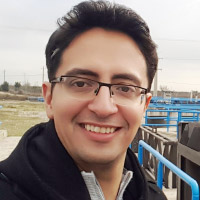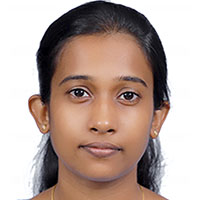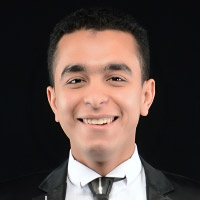Matthai’s team
Simulation-Guided Complex Systems Engineering
We try to unravel the complex interplay of sub-surface processes in geological structures by means of novel numerical simulations, simultaneously considering wide ranging time and length scales from the rock pore to the scale of the earth’s crust.
Of particular interest is the migration of CO2 in geo-storage facilities, hydrocarbon pathways and flow and recovery from fractured reservoirs, as well as the discovery scale-aware constitutive relationships for heterogeneous porous media.
News
Visit the Highlights section of Stephan Matthai’s profile page to see our latest publications and projects.
Projects
-
Simulation-based forecasting and monitoring of subsurface behaviour of carbon dioxide
-
Quantifying CO2 trapping mechanisms and capacity in open saline aquifers
-
Multiscale static and dynamic modelling of Precipice Facies, Wendoan, Surat Basin, Queensland
-
Simulation of flow, transport and mechanic processes in fractured rocks
-
Adaptive unstructured discretisation and fluid-flow property computations on segmented images of porous media
Our research approach: Simulation-Guided Complex Systems Engineering
What?
- Simulation-Based Engineering Science
- Goal: predict system behaviour from sparse observations
- What-if? Analysis of natural and engineered systems
- Early detection and elimination of side effects of engineering measures
- Optimisation of system performance
- Assimilation of monitoring data
- Uncertainty analysis
- Cyber-physica systems
How?
Complex systems modeling platform (CSMP++) etc.
- Goal-based simulation (space-time adaptive methods)
- HPC parallel cloud- / GPU / real-time computing
- Extensive international collaboration
- Industry consortia and champions in high-impact application areas (CTC)
- Development of commercial strength user-friendly software through strategic alliances with industry
- Impact illustrated by showcases and benchmarks that show that technology makes a difference
Stephan Matthai
Professor and Chair of Matthai’s team, the University of Melbourne, Australia
Sub-surface processes are complex and, traditionally, progress in their understanding was made when this complexity could be unraveled into component processes studied in isolation. The detailed knowledge of these processes, however, is insufficient for predicting the emergent properties of natural and engineered systems because emergent behaviour is the product of the complex interplay of these processes.
Understanding process interactions and the emergent system behaviour that is hidden in the sub-surface is my research mission. I focus on this because I believe that once the characteristic patterns, system states and cause-and-effect chains have been clarified, the detailed structure of the system can be predicted from sparse observations. With this understanding, engineering measures can be optimised and unwanted side effects eliminated.
In contrast to the idealisations of the last century, material properties of natural subsurface systems are anisotropic and spatially variable. They also vary with scale and have intricate spatial correlation structures that are the product of complex processes themselves. This organisation has a profound influence on the manifestation of subsurface processes and gives rise to many complex phenomena.
Complex subsurface phenomena can be captured and reproduced by sophisticated numerical simulations that utilise accurate models of subsurface structures and component physics. Herein lies the challenge of Matthai’s team as an applied scientific discipline that is crucial for the human condition in the twenty-first century:
- It guarantees supply and efficient recovery of natural energy resources with a minimal environmental footprint.
- It offers crucial expertise to create a carbon-neutral economy.
- It has a key role to play in preserving the world’s fresh water supply and its protection from pollutants.
The subsurface has now become a multi-stakeholder environment demanding a holistic engineering approach in the search for sustainable resource management solutions.
Core of my strategy to resolving modelling and simulation challenges is the continuous development of the object-oriented finite element – finite volume software “Complex Systems Modelling Platform (CSMP++)”, that i invented in 1994. This application programmer interface continues to be developed by an international team of developers from academia and industry. This software is also available commercially so that both engineers and scientists can more realistically model real-world systems, conclusively answering What-If? questions when and where it matters. CSMP underpins novel software tools adding to the characterisation, modelling, and simulation of flow and transport processes in hydrocarbon reservoirs CO2 geo-storage sites and geothermal systems.
Complex Systems Modelling Platform (CSMP++)
Teaching (2017)
CVEN30010: Systems Modelling and Design: Engineering design tools and processes applied to water supply / geotechnical engineering
ENEN90030: Groundwater Hydrology: Water challenges of the 21st century and derived engineering methods
Multiphase flow in naturally fractured reservoirs: Short course taught annually for HOT Engineering.
Download: Multiphase flow in naturally fractured reservoirs: course brochure PDF
Career
I earned my PhD from the Research School of Earth Sciences at the Australian National University, Canberra, and conducted postdoctoral research on hydrocarbon systems in the Gulf of Mexico basin at Cornell University, and fluid flow in fractured rock masses at Stanford University. As a research fellow at the Swiss ETH Zürich, I implemented the prototype of CSMP++.
My previous positions include a Government’s Lectureship at Imperial College London, and a professor – and directorship of the (Petroleum) Matthai’s team Institute at the Montanuniversitaet Leoben, Austria. My past research focused on subsurface (multiphase) fluid-flow processes and their computer simulation (>50 ISI publications) with specific applications on coupled flow, geomechanics, and reactive transport processes facilitated by rock fractures and faults with applications to hydrocarbon extraction, gas storage / geological CO2 sequestration, enhanced geothermal systems, nuclear waste repository safety, and hydrothermal ore deposits. On these subjects, I have taught graduate students, consulted to the industry, and acted as advisor to government agencies and professional societies.
At Imperial College London, I led an industry consortium on the “Improved Simulation of Fractured and Faulted Reservoirs”. This JIP was initiated in 2001 together with Martin Blunt and ran over three funding cycles until 2013. Since 2009, Heriot Watt University and the Montanuniversitaet Leoben (Austrial) were also part of it. Specific topics investigated by this consortium include: (1) relative permeability upscaling for field-scale simulation of multiphase flow through naturally fractured reservoirs, (2) the scale variance of transport properties, (3) stress-sensitivity of fractured hydrocarbon reservoirs, and (4) the interpretation of transient pressure (well) tests. This applied research was funded by international and national oil companies; see below.
I am also serving on steering committees for the SPE/EAGE/ECMOR and provide advice to government and private sector stakeholders worldwide. The scope of such contracts has included hydrocarbon and minerals exploration, reservoir simulation, feasibility analysis of geological CO2 storage, geothermal energy extraction, and safety assessment of nuclear waste storage facilities.

Hossein Agheshlui

Heraji (Hansika Malawara) Arachchige

Luat Khoa Tran

AbdAllah Youssef
CSMP++
What is CSMP++?
CSMP++ is a C++14 ANSI / ISO standard-compliant application programmer interface (API).
It is a library of numerical methods for the combined simulation of thermal–hydrological–mechanical–chemical (THMC) processes, and has been designed for complex geologic models, spanning a range of length scales.
CSMP++ contains implementations of the finite-element- (FEM) and finite volume (FVM) methods and combinations thereof.
In addition to solution methods for elliptic-parabolic and hyberbolic partial differential equations, it provides implementations of:
- Constitutive relationships for THMC processes
- Equations of state
- Property modeling and simulation analysis functionality
CSMP++ is based on a unique data model: There are no arrays nor cell numbers.
Material properties and dependent variables are stored directly on a hierarchical tree structures representing the mesh.
This implementation supports local time-stepping methods, and dynamic mesh adaptivity, facilitating goal-based simulation.
Computational domains can evolve in shape and properties over time, and multi-domain simulations, where different physics are modelled in different regions, are easy to implement.
CSMP++ forms the basis of a wide variety of simulation programs, including discrete fracture and matrix modelling, upscaling and reservoir simulation. Publications on these applications are furnished upon request.
Ownership and development
CSMP++ is owned and developed in its entirety by the following institutions:
- ETH Zuerich, Switzerland
- Montanuniversitaet Leoben, Austria
- Heriot Watt University, Edinburgh, UK
- The University of Melbourne, Australia (together “Owning Institutions”).
Contributions are made also by universities that are not (or no longer) members of this group, such as Imperial College London.
- The Owning Institutions have formed the “Originators Group” which is steering the development and licensing of CSMP++
- This Originators Group is represented by the “Board of Originators”
- Each of the Owning Institutions is authorized to conclude commercial license agreements for CSMP++ to interested parties, acting on behalf of the Owning Institutions.
- Subject to unanimous vote of the Board, and “Terms and Conditions”, the Owning Institutions can grant exclusive/non-exclusive distribution licenses for commercial applications based on the CSMP++ API.
Dependencies
CSMP++ does not contain any third-party software nor source code that is under GNU public license.
For the solution of large systems of algebraic equations, it relies on the algebraic multigrid method for systems, as implemented in the serial and parallel versions of SAMG from Fraunhofer Gesellschaft, St. Augustin, Germany.
Licensing
Exclusive / non-exclusive distribution licenses for CSMP-based applications must be negotiated with the Board of Originators.
Standard academic and commercial licenses are described in the CSMP++ Licensing and Pricelist document that is updated annually.
Contact
Board of Originators contact:
S.K. Matthai
Department of Infrastructure Engineering
The University of Melbourne
Parkville, Vic 3010 Australia.
Email: stephan.matthai@unimelb.edu.au
Telephone: +61 8344 6084
Seminar
View video seminar: Multiphysics complex geometry reservoir simulation with CSMP++